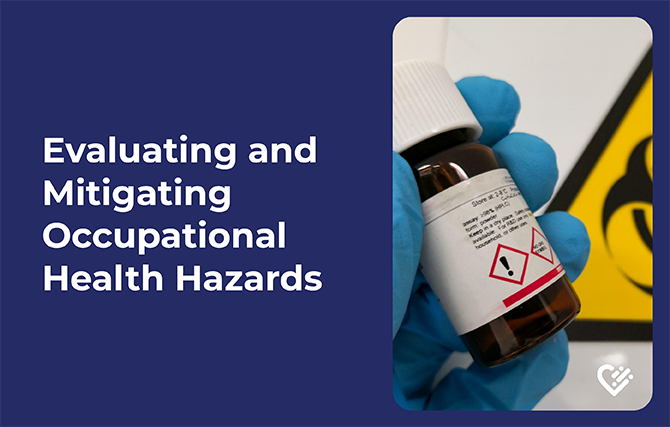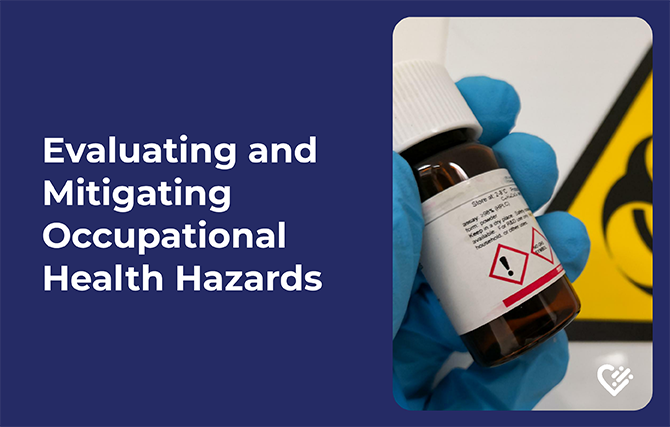Workplace safety and health form the bedrock of any successful organization. An occupational health hazard is any factor or activity that may risk an employee’s well-being during work. For healthcare professionals, HR team members, and compliance officers, ensuring that these hazards are identified and managed is not only a moral responsibility but a legal one.

Understanding Occupational Health Hazards
Occupational health hazards can be categorized into five primary types:
- Physical: Exposure to harmful radiation, extreme temperatures, or noise.
- Chemical: Inhaling, ingesting, or contacting toxic substances.
- Biological: Exposure to infectious agents like bacteria or viruses.
- Ergonomic: Strains due to poor posture or repetitive movements.
- Psychosocial: Stress, harassment, or long working hours.
In healthcare settings, for instance, workers may face chemical hazards from disinfectants, biological hazards from patient care, and ergonomic hazards from lifting patients. These hazards can lead to significant health implications and decreased productivity.
Importance of Evaluation
Regular risk evaluations are essential to combat the threat of occupational health hazards. Tools like safety audits, risk assessments, and gathering employee feedback provide invaluable data. Healthcare professionals are pivotal in identifying and assessing potential hazards, ensuring employees remain at the heart of the evaluation process.
Mitigation Strategies
Once hazards are identified, a comprehensive risk management plan can be developed. This includes:
- Organizing training and awareness programs to empower employees with knowledge.
- Equipping staff with the right personal protective equipment and ensuring its proper maintenance.
- Establishing engineering controls like effective ventilation systems or protective barriers.
- Implementing administrative controls, such as alternating shift patterns and providing adequate rest periods.
Compliance Strategies for Healthcare Settings
It’s crucial to adhere to industry standards and regulations to avoid legal repercussions. Compliance officers can collaborate with healthcare professionals to:
- Ensure all safety regulations are met and documented.
- Maintain accurate records of all safety protocols and training sessions.
- Schedule regular training sessions for staff.
- Continuously monitor and update compliance strategies to align with the latest regulations.
Challenges in Compliance and How to Overcome Them
Even with the best intentions, organizations can encounter pitfalls in maintaining compliance. Some common challenges include evolving regulations, resistance to change, and budget constraints. Even amidst these challenges, effective compliance hinges on well-executed strategic planning, active engagement of all staff members, and an enduring commitment to continuously refining and enhancing existing processes.
The Role of HR and Compliance Officers
The HR department’s core role is to ensure a safe and compliant workplace environment by recruiting trained professionals, organizing training sessions, and addressing employees’ concerns. On the other hand, compliance officers are entrusted with updating, monitoring, and enforcing strategies. The collaboration between healthcare professionals, HR, and compliance officers guarantees a holistic approach to workplace safety.
Conclusion
In summary, evaluating and mitigating occupational health hazards is crucial for the safety and well-being of employees. Healthcare professionals, HR teams, and compliance officers are responsible for establishing and maintaining a safe, compliant workplace. Organizations are encouraged to continuously evaluate and update their strategies to stay ahead of potential risks and evolving regulations.
